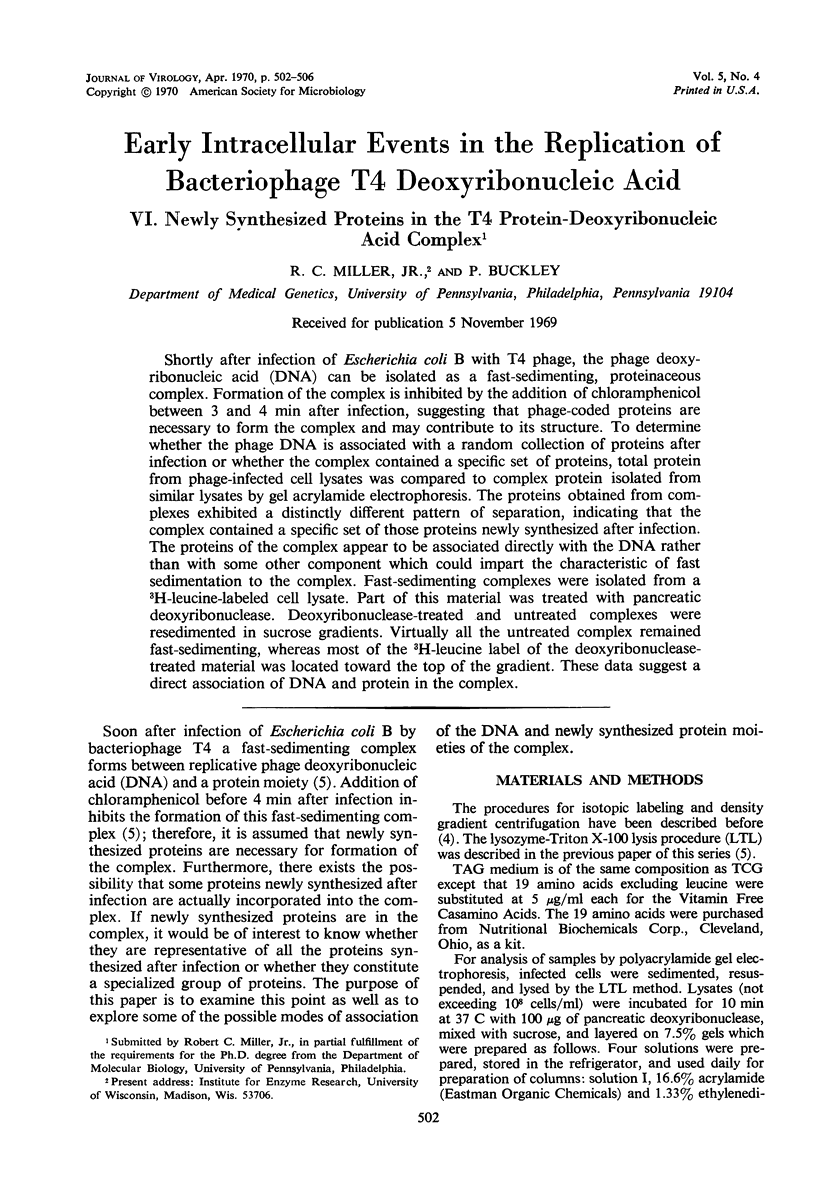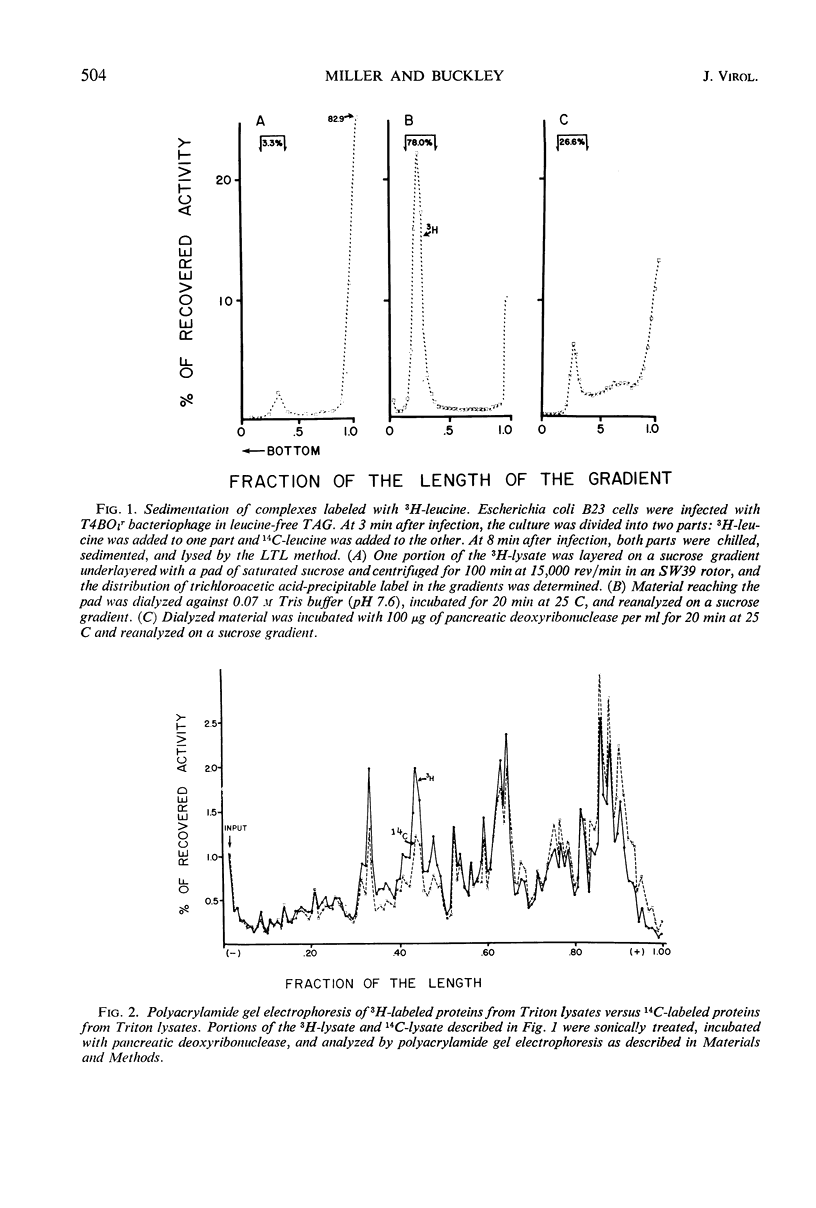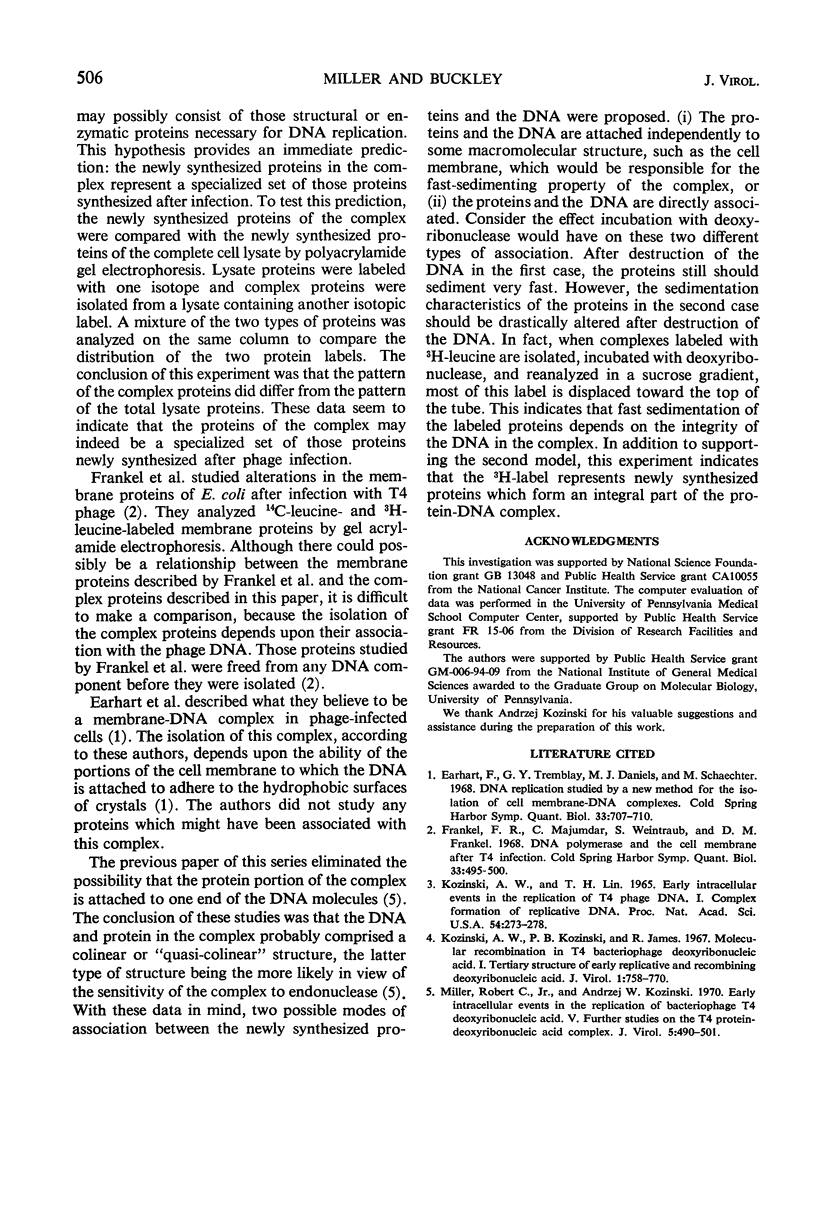Abstract
Shortly after infection of Escherichia coli B with T4 phage, the phage deoxyribonucleic acid (DNA) can be isolated as a fast-sedimenting, proteinaceous complex. Formation of the complex is inhibited by the addition of chloramphenicol between 3 and 4 min after infection, suggesting that phage-coded proteins are necessary to form the complex and may contribute to its structure. To determine whether the phage DNA is associated with a random collection of proteins after infection or whether the complex contained a specific set of proteins, total protein from phage-infected cell lysates was compared to complex protein isolated from similar lysates by gel acrylamide electrophoresis. The proteins obtained from complexes exhibited a distinctly different pattern of separation, indicating that the complex contained a specific set of those proteins newly synthesized after infection. The proteins of the complex appear to be associated directly with the DNA rather than with some other component which could impart the characteristic of fast sedimentation to the complex. Fast-sedimenting complexes were isolated from a 3H-leucine-labeled cell lysate. Part of this material was treated with pancreatic deoxyribonuclease. Deoxyribonuclease-treated and untreated complexes were resedimented in sucrose gradients. Virtually all the untreated complex remained fast-sedimenting, whereas most of the 3H-leucine label of the deoxyribonuclease-treated material was located toward the top of the gradient. These data suggest a direct association of DNA and protein in the complex.
Full text
PDF




Selected References
These references are in PubMed. This may not be the complete list of references from this article.
- Earhart C. F., Tremblay G. Y., Daniels M. J., Schaechter M. DNA replication studied by a new method for the isolation of cell membrane-DNA complexes. Cold Spring Harb Symp Quant Biol. 1968;33:707–710. doi: 10.1101/sqb.1968.033.01.079. [DOI] [PubMed] [Google Scholar]
- Frankel F. R., Majumdar C., Weintraub S., Frankel D. M. DNA polymerase and the cell membrane after T4 infection. Cold Spring Harb Symp Quant Biol. 1968;33:495–500. doi: 10.1101/sqb.1968.033.01.057. [DOI] [PubMed] [Google Scholar]
- Kozinski A. W., Kozinski P. B., James R. Molecular recombination in T4 bacteriophage deoxyribonucleic acid. I. Tertiary structure of early replicative and recombining deoxyribonucleic acid. J Virol. 1967 Aug;1(4):758–770. doi: 10.1128/jvi.1.4.758-770.1967. [DOI] [PMC free article] [PubMed] [Google Scholar]
- Kozinski A. W., Lin T. H. Early intracellular events in the replication of T4 phage DNA. I. Complex formation of replicative DNA. Proc Natl Acad Sci U S A. 1965 Jul;54(1):273–278. doi: 10.1073/pnas.54.1.273. [DOI] [PMC free article] [PubMed] [Google Scholar]
- Miller R. C., Jr, Kozinski A. W. Early intracellular events in the replication of bacteriophage T4 deoxyribonucleic acid. V. Further studies on the T4 protein-deoxyribonucleic acid complex. J Virol. 1970 Apr;5(4):490–501. doi: 10.1128/jvi.5.4.490-501.1970. [DOI] [PMC free article] [PubMed] [Google Scholar]


